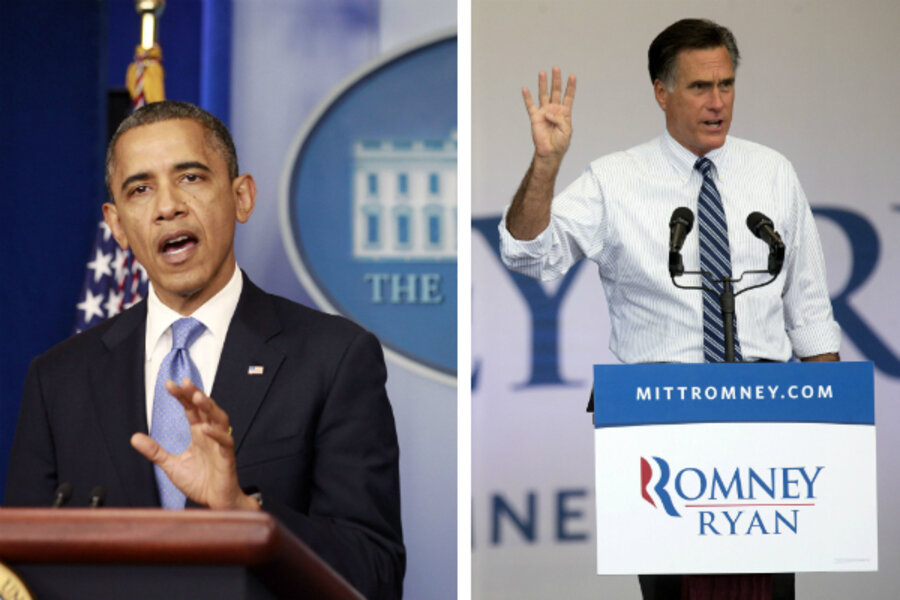Presidential polls: Where presidential race stands as hurricane Sandy buffets US politics
Loading...
| Washington
Election polling is among the many American activities hurricane Sandy is disrupting. At least two major tracking polls – the Gallup poll and the Investor’s Business Daily/TIPP survey – have suspended operations as the gigantic storm sweeps across much of the US Northeast. Other pollsters might find their jobs more complicated if millions of households in the region lose power and become unreachable by phone.
That said, now might be a good time to sit back and look at overall polling measures of the presidential race. It could be the last time prior to Election Day that we get to see numbers that haven’t been swung one way or another by falling wires and flooded roads.
For major compendiums of polls – which crunch together lots of surveys to try to mitigate the errors and chance inherent in the business – the bottom line remains as it has for some time now: Republican Mitt Romney retains a narrow edge, so narrow that it falls within the margin of error of the enterprise.
The RealClearPolitics rolling average of major polls, as of Monday afternoon, had Mr. Romney leading President Obama by one percentage point, for instance, 47.7 percent to 46.7 percent.
The Huffington Post statistical model, which combines state and local polls, in contrast showed Romney up by a mere two-tenths of a percentage point, 47.4 percent to 47.2 percent.
Both these measures have been generally stable over the past week. (Both also take into account Monday’s Politico/George Washington University Battleground poll, which shows Mr. Obama up by one percentage point, and the daily Gallup tracking poll, which had Romney back up by five among likely voters. So, partisans, please don’t e-mail us saying we’re ignoring the polls most favorable to your candidate.)
But in the race to 270 Electoral College votes and actual victory, Obama appears to maintain the small lead he’s had for weeks. The Huffington Post state-by-state model judges Obama likely to collect 277 Electoral College votes, according to how things stand at the moment, with Romney at 206.
The “Now-cast” of New York Times polling analyst Nate Silver puts Obama as the favorite to win 299.8 electoral votes, given current state polls, with Romney’s corresponding number at 238.2
This apparent split in the state and national results stems from Obama’s continued leads in the many of the most important battleground states, such as Ohio, where the RealClearPolitics rolling average puts him in front by a slim 1.9 percentage points. Obama’s also up in New Hampshire and Iowa, by around 2 percentage points in each case, while he’s tied with Romney in Colorado and Virginia, according to RCP.
Again, this reflects a situation that has seemed stable over the past week to 10 days. Even with only a week left in the race, there’s still time for that to change, of course, given that the margins between the candidates are so slim. But hurricane Sandy’s effects may in essence throw lots of noise into poll results, meaning surveys might not reflect any movement one way or another until Election Day is almost upon us.






